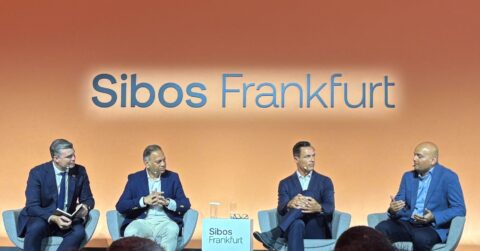
NiCE’s 2025 Analyst Summit concluded in Vienna not too long ago and refreshingly; it felt less like a technology showcase and more a statement of intent. The company, long recognized as a leader in Customer Experience (CX) platforms, is now recasting itself as an Artificial Intelligence (AI)-native orchestrator of customer engagement with an ambition to span not just the contact center, but the entire enterprise.
It was clear from the conversations that the industry has entered a new phase. The “cloud first” transformation that dominated the past decade is now table stakes. The next frontier is intelligence, be it connecting data, automation, or orchestration to make customer interactions more autonomous, contextual, and interconnected.
Reach out to discuss this topic in depth.
The six shifts shaping the AI-first CX vision

NiCE framed its strategy around six shifts that together capture how it sees customer experience evolving: agentic AI taking over interactions, new CX roles for humans, the rise of a Customer Engagement Platform (CEP) (which brings together Customer Relation Management (CRM) and Contact Center as a Service (CCaaS) even closer), automation beyond the contact center, AI agents forming ecosystems, and the emergence of machine-to-machine interactions.
These shifts represent the logical progression of automation and data maturity. But being realistic, they are also aspirational. The technology is advancing faster than enterprise readiness. Moving from isolated automation to coordinated, enterprise-wide orchestration requires re-architecting workflows, governance, and talent models in ways few organizations have attempted.
The most significant takeaway wasn’t that NiCE has all the answers. It was that the scope of “CX” itself is expanding from the front office to the core of business operations.
CX moves beyond the front office
One of the most compelling discussions across sessions was about taking customer experience “beyond the contact center.” NiCE leadership repeatedly emphasized that the majority of friction in customer journeys occurs not in service interactions, but in the middle and back offices, including billing, fulfillment, collections, and claims processes.
Using AI and orchestration to bridge those silos is both logical and necessary. It’s also incredibly difficult. The mid-office remains dominated by legacy systems and rigid workflows, while back-office processes are rarely designed with real-time visibility in mind.
NiCE’s focus on orchestration across these layers reflects an industry-wide realization: CX can no longer be optimized within a single function. True differentiation will come from aligning customer-facing and operational processes into a single, AI-enabled flow of work. That goal, however, will demand deep process integration and strong partnerships. Most likely, success will be uneven across industries.
The convergence of sales, marketing, and CX
Another emerging theme at the summit was how the traditional boundaries between sales, marketing, and service are eroding. Conversations that once focused narrowly on contact centers are now encompassing end-to-end customer engagement.
NiCE spoke about a future where enterprises manage engagement journeys holistically, from awareness to conversion to support, on a unified platform. The idea is that AI and data orchestration will eventually make it possible to anticipate intent and deliver personalized experiences across all these functions.
While this is directionally correct, it raises practical questions about ownership and alignment. Marketing systems, CRM platforms, and CX tools often sit under different leaders, with separate budgets and metrics. The aspiration to merge them into a seamless continuum is compelling, but realizing it will require more than APIs; it will take organizational convergence as well.
WEM and the future of human–AI collaboration
Perhaps the most grounded sessions at the summit were those focused on Workforce Engagement Management (WEM). Here, NiCE’s message was refreshingly pragmatic. The company is not positioning AI as a replacement for human expertise, but as a collaborator.
NiCE’s roadmap, including AI copilots for supervisors, automated evaluations, and real-time coaching insights, reflects a belief that human and artificial intelligence will increasingly work side by side. The framework for WEM now extends beyond the front office to include middle- and back-office roles, blending scheduling, quality, and performance management across different work types.
This aligns with a broader truth the industry is beginning to confront: AI transformation is ultimately a human transformation. The shift to agentic systems will only succeed if employees trust the tools, understand the logic behind decisions, and feel empowered rather than displaced. NiCE’s focus on transparency and augmentation rather than substitution may prove one of its more durable advantages.
Adding Cognigy: Strengthening the agentic foundation
One element that underscores NiCE’s seriousness about this transformation is its acquisition of Cognigy, a conversational AI specialist. The move gives NiCE the ability to natively integrate conversational and agentic AI capabilities into its platform rather than rely on third-party connectors. It also reflects how the company is thinking about orchestration as not a stitched-together layer, but as a tightly integrated fabric that combines data, dialogue, and decisioning in one place.
If NiCE executes this integration well, it will have one of the few enterprise platforms capable of managing both the orchestration logic and the conversational surface in a unified way.
The success of this acquisition will depend on how fluidly NiCE can embed Cognigy’s capabilities across its broader ecosystem rather than letting them sit as a standalone asset.
From agentic AI to orchestration: the hard work ahead
The company’s emphasis on “agentic” AI represents one of the most significant architectural changes in CX. NiCE expects that a meaningful share of customer interactions will be handled by such AI agents within three years.
That vision makes sense, but the path to get there is complicated. True orchestration requires more than good models; it depends on clean, contextual data, reliable routing of decisions across systems, and clear governance around when AI takes the lead. Additionally, it requires enterprises to overcome immense inertia to change their processes that they’ve been accustomed to for years.
The ambition to make this seamless across front-, mid-, and back-office systems is bold. Whether it can be done at scale remains to be seen.
The bigger picture
The NiCE Analyst Summit offered a clear snapshot of how the CX industry is evolving. The conversation has shifted from efficiency to enterprise-wide orchestration, from tools to ecosystems, and from automation to collaboration.
It also highlighted the tension between vision and readiness. The idea of AI-first CX: where customer interactions are autonomous, intelligent, and tightly linked to business operations, is conceptually sound. But for most enterprises, it will take years of groundwork before the promise becomes reality.
NiCE’s advantage lies in having both the technology foundation and the credibility to lead this transition. Its challenge will be pacing ambition with pragmatism, proving that orchestration and AI can scale without overwhelming the organizations they’re meant to serve.
The summit left one clear impression: the definition of customer experience is expanding faster than ever. And as CX moves deeper into the enterprise, the winners will not just be those who build the best AI, but those who help organizations connect people, processes, and intelligence into something coherent and ultimately, human.
If you found this blog interesting, check out our NiCE Is Looking Beyond CCaas And The Move Might Signal Something Important For The Entire CX Industry | Blog – Everest Group, which delves deeper into the global services industry regarding NiCE.
If you have any questions or want to discuss NiCE’s revolution in more depth, please contact Sharang Sharma ([email protected]) and David Rickard ([email protected]).











